Catch-Up Savings After 50: From a Financial Advisor
The idea that turning 50 means slowing down is often a misconception held by younger people. People who have reached this milestone understand it well.
It’s a time when retirement feels closer. There is still much life to enjoy. To make the most of these years, ensuring your finances are in order is essential.
Fortunately, the government recognizes the need for people approaching retirement to accelerate their savings. Tax laws allow "catch-up" contributions.
This lets people aged 50 and older save more in tax-advantaged accounts. These accounts include IRAs, 401(k)s, and HSAs. For HSAs, this starts at age 55.
The Power of Catch-Up Contributions
Maximizing catch-up contributions can provide a substantial boost to your retirement savings. If you add an extra $1,000 each year to your IRA starting at age 50, it can grow significantly.
In 20 years, it could reach nearly $44,000. This is based on a 7% average annual return. The impact is even greater for 401(k)s or similar plans, which offer higher catch-up limits.
Steps to Strengthen Your Retirement Savings
1. Evaluate Your Retirement Preparedness
Start by assessing whether your savings are on track to cover essential expenses in retirement. Tools like retirement readiness scores give you a quick view of your financial situation. They can help you improve your readiness by suggesting changes to your savings, investment strategies, or other factors.
For a more comprehensive analysis, consider working with a financial advisor to ensure your goals align with your current progress.
2. Leverage Catch-Up Contributions
Once you turn 50, take advantage of increased contribution limits for retirement accounts:
● IRAs: In 2024 and 2025, you can contribute an additional $1,000 annually, bringing the total potential contribution to $8,000.
● 401(k)s and Similar Plans: You can add an extra $7,500 each year. This means total contributions can be $30,500 in 2024 and $31,000 in 2025.
● SIMPLE IRAs: Catch-up contributions let you add an extra $3,500 in 2024 and 2025. This raises total contributions to $19,500 in 2024 and $20,000 in 2025.
● SE401(k)s: Add up to $7,500 more annually, for total contributions of $30,500 in 2024 and $31,000 in 2025.
The SECURE 2.0 Act introduces even higher limits for those aged 60-63, starting in 2025, potentially allowing up to 150% of the standard catch-up contribution.
3. Maximize Tax-Advantaged Accounts
Tax-advantaged accounts are essential tools for retirement planning:
● Traditional IRAs and 401(k)s help you save on taxes. Contributions lower your taxable income. Earnings grow without being taxed until you withdraw them. However, withdrawals are taxed.
● Roth IRAs: Contributions are made after-tax, but withdrawals in retirement are tax-free if conditions are met.
● HSAs: These accounts offer a triple tax advantage—contributions, earnings, and qualified medical expense withdrawals are tax-free.
If you have an HSA, consider leaving the funds invested while paying current medical expenses out of pocket. This approach allows your HSA to grow and cover future medical costs, including those in retirement.
4. Optimize Your Investment Strategy
Contributions alone may not be enough to achieve your retirement goals. It’s important to have a diverse portfolio.
This means having different types of investments. Your choices should match your time frame and how much risk you can handle. Stocks, which have historically outperformed bonds and cash, can help grow your savings, though they come with higher volatility.
As retirement nears, gradually shifting to a more conservative allocation can help preserve your savings while still providing growth opportunities. For those with company stock, consider how concentrated stock positions affect your overall portfolio risk.
Enjoy the Retirement You Envision
Planning for retirement is more than saving money. It’s about building a financial base for the life you want. By fully utilizing catch-up contributions, tax-advantaged accounts, and a smart investment strategy, you can approach retirement with confidence and enjoy the years ahead to their fullest.
Sources:
https://www.kiplinger.com/taxes/the-problem-with-401k-catch-up-contributions
Disclosures:
This information is an overview and should not be considered as specific guidance or recommendations for any individual or business.
This material is provided as a courtesy and for educational purposes only.
These are the views of the author, not the named Representative or Advisory Services Network, LLC, and should not be construed as investment advice. Neither the named Representative nor Advisory Services Network, LLC gives tax or legal advice. All information is believed to be from reliable sources; however, we make no representation as to its completeness or accuracy. Please consult your Financial Advisor for further information.

